#control transformer market forecast
Explore tagged Tumblr posts
Text
AI-Based Future Mantra: Col Rajyavardhan Rathore’s Vision for Innovation & Growth 🤖🚀

In an era where Artificial Intelligence (AI) is reshaping industries, economies, and societies, Col Rajyavardhan Singh Rathore envisions a future-driven, innovation-led India that embraces AI to power growth, governance, and global competitiveness. His AI-based Future Mantra focuses on leveraging AI for digital transformation, job creation, industry modernization, and national security, ensuring India emerges as a leader in the AI revolution.
🌟 Key Pillars of Col Rathore’s AI Vision
1️⃣ AI-Driven Digital India: Transforming Governance & Public Services
✅ AI-powered e-Governance — Enhancing efficiency, transparency & citizen services. ✅ Smart City Development — AI-based urban planning, traffic management & waste control. ✅ Predictive Analytics for Policy Making — Data-driven decision-making for better governance.
“AI is the key to revolutionizing governance and making citizen services more efficient, accessible, and transparent.”
2️⃣ AI for Industry & Economic Growth: Powering Smart Enterprises
✅ AI in Manufacturing & MSMEs — Enhancing productivity & automation. ✅ AI-powered Startups & Innovation Hubs — Supporting entrepreneurs with next-gen AI solutions. ✅ Boosting IT, Fintech & Smart Commerce — Strengthening India’s global digital economy presence.
“AI is not about replacing jobs; it’s about creating new opportunities, industries, and careers.”
3️⃣ AI in Agriculture: Revolutionizing Rural Economy 🌾🤖
✅ Smart Farming with AI — Precision agriculture & automated irrigation. ✅ AI-based Crop Monitoring & Forecasting — Reducing farmer losses & improving productivity. ✅ Digital Marketplaces for Farmers — Connecting rural producers to global markets.
“AI can empower farmers with knowledge, tools, and predictive analytics to revolutionize Indian agriculture.”
4️⃣ AI in Education & Skill Development: Empowering Youth for Future Jobs 🎓💡
✅ AI-driven Personalized Learning — Smart classrooms & adaptive learning systems. ✅ AI Upskilling Programs — Training youth in AI, robotics & machine learning. ✅ AI-Powered Job Market Platforms — Connecting talent with industries using AI analytics.
“The future belongs to those who master AI. We must equip our youth with the skills to lead in the AI economy.”
5️⃣ AI in National Security & Defense: A Smarter, Safer India 🛡️🚀
✅ AI in Cybersecurity — Advanced threat detection & prevention. ✅ AI-powered Surveillance & Defense Tech — Strengthening India’s armed forces. ✅ AI in Disaster Management — Early warning systems & crisis response automation.
“AI is the force multiplier for India’s defense and security strategy in the 21st century.”
🚀 The Road Ahead: Col Rathore’s Action Plan for AI-Driven Growth
🔹 AI Policy & Infrastructure Development — Strengthening India’s AI ecosystem. 🔹 Public-Private Partnerships for AI Innovation — Encouraging global collaborations. 🔹 AI Talent & Research Investments — Making India a global hub for AI development. 🔹 Ethical AI & Responsible Innovation — Ensuring AI benefits all sections of society.
“AI is India’s gateway to a smarter, more efficient, and innovative future. Let’s lead the way!” 🚀
🌍 India’s AI Future: Leading the Global Innovation Wave
✅ AI-powered industries, smart cities, and a digital economy. ✅ Next-gen job creation & future-ready workforce. ✅ Stronger governance, national security, and agriculture. ✅ A global AI leader driving innovation & inclusivity.
🔥 “AI is not just a tool — it’s the future. And India will lead it!” 🤖 Jai Hind! Jai Innovation! 🇮🇳🚀
4 notes
·
View notes
Text
Boosting Efficiency: The Role of ERP Software in Modern Manufacturing Operations
In today's fast-paced manufacturing landscape, efficiency is not just a desirable trait; it's a necessity. To stay competitive and meet the demands of the market, manufacturers must streamline their processes, optimize resource utilization, and enhance decision-making capabilities. This is where Enterprise Resource Planning (ERP) software steps in as a game-changer. In this article, we'll delve into the pivotal role of ERP systems in revolutionizing manufacturing operations, particularly in India's thriving industrial sector.
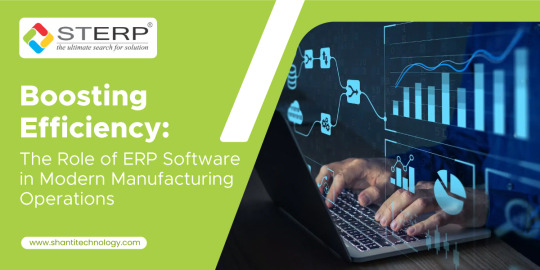
Understanding ERP for Manufacturing Industry
ERP systems for manufacturing are comprehensive software solutions designed to integrate and automate core business processes such as production planning, inventory management, supply chain logistics, financial management, and human resources. By consolidating data and operations into a unified platform, ERP empowers manufacturers with real-time insights, facilitates collaboration across departments, and enables informed decision-making.
Streamlining Operations with ERP Solutions
In the dynamic environment of manufacturing, where every minute counts, efficiency gains translate directly into cost savings and competitive advantages. ERP software for manufacturing offers a multitude of features that streamline operations and drive efficiency:
1. Enhanced Production Planning: ERP systems enable manufacturers to create accurate production schedules based on demand forecasts, resource availability, and production capacity. By optimizing production timelines and minimizing idle time, manufacturers can fulfill orders promptly and reduce lead times.
2. Inventory Management: Efficient inventory management is crucial for balancing supply and demand while minimizing holding costs. ERP software provides real-time visibility into inventory levels, automates reorder points, and facilitates inventory optimization to prevent stockouts and overstock situations.
3. Supply Chain Optimization: ERP solutions for manufacturing integrate supply chain processes from procurement to distribution, enabling seamless coordination with suppliers and distributors. By optimizing procurement cycles, minimizing transportation costs, and reducing lead times, manufacturers can enhance supply chain resilience and responsiveness.
4. Quality Control: Maintaining product quality is paramount in manufacturing to uphold brand reputation and customer satisfaction. ERP systems offer quality management modules that streamline inspection processes, track product defects, and facilitate corrective actions to ensure adherence to quality standards.
5. Financial Management: Effective financial management is essential for sustaining manufacturing operations and driving profitability. ERP software provides robust accounting modules that automate financial transactions, streamline budgeting and forecasting, and generate comprehensive financial reports for informed decision-making.
6. Human Resource Management: People are the cornerstone of manufacturing operations, and managing workforce efficiently is critical for productivity and employee satisfaction. ERP systems for manufacturing include HR modules that automate payroll processing, manage employee records, and facilitate workforce planning to align staffing levels with production demands.
The Advantages of ERP for Manufacturing Companies in India
India's manufacturing sector is undergoing rapid transformation, fueled by factors such as government initiatives like "Make in India," technological advancements, and globalization. In this dynamic landscape, ERP software plays a pivotal role in empowering manufacturing companies to thrive and remain competitive:
1. Scalability: ERP solutions for manufacturing are scalable, making them suitable for companies of all sizes – from small and medium enterprises (SMEs) to large conglomerates. Whether a company is expanding its operations or diversifying its product portfolio, ERP systems can adapt to evolving business needs and support growth.
2. Compliance: Regulatory compliance is a significant concern for manufacturing companies in India, given the complex regulatory environment. ERP software incorporates compliance features that ensure adherence to industry regulations, tax laws, and reporting requirements, minimizing the risk of non-compliance penalties.
3. Localization: ERP vendors catering to the Indian manufacturing sector offer localized solutions tailored to the unique requirements of the Indian market. From multi-currency support to GST compliance features, these ERP systems are equipped with functionalities that address the specific challenges faced by Indian manufacturers.
4. Cost Efficiency: Implementing ERP software for manufacturing entails upfront investment, but the long-term benefits far outweigh the costs. By streamlining processes, optimizing resource utilization, and reducing operational inefficiencies, ERP systems drive cost savings and improve overall profitability.
5. Competitive Edge: In a fiercely competitive market, manufacturing companies in India must differentiate themselves through operational excellence and agility. ERP software equips companies with the tools and insights needed to outperform competitors, adapt to market dynamics, and capitalize on emerging opportunities.
Choosing the Right ERP Software for Manufacturing
Selecting the right ERP solution is crucial for maximizing the benefits and ensuring a smooth implementation process. When evaluating ERP software for manufacturing, companies should consider the following factors:
1. Industry-specific functionality: Choose an ERP system that offers industry-specific features and functionalities tailored to the unique requirements of manufacturing operations.
2. Scalability and flexibility: Ensure that the ERP software can scale with your business and accommodate future growth and expansion.
3. Ease of integration: Look for ERP systems that seamlessly integrate with existing software applications, such as CRM systems, MES solutions, and IoT devices, to create a cohesive technology ecosystem.
4. User-friendliness: A user-friendly interface and intuitive navigation are essential for ensuring widespread adoption and maximizing user productivity.
5. Vendor support and expertise: Select a reputable ERP vendor with a proven track record of success in the manufacturing industry and robust customer support services.
Conclusion
In conclusion, ERP software has emerged as a cornerstone of modern manufacturing operations, empowering companies to enhance efficiency, drive growth, and maintain a competitive edge in the global market. For manufacturing companies in India, where agility, scalability, and compliance are paramount, implementing the right ERP solution can be a transformative investment that paves the way for sustainable success. By harnessing the power of ERP, manufacturers can optimize processes, streamline operations, and unlock new opportunities for innovation and growth in the dynamic landscape of the manufacturing industry.
#ERP software providers in India#Manufacturing enterprise resource planning#ERP systems for manufacturing companies#ERP system for manufacturing industry#ERP for manufacturing companies#ERP software for engineering company#ERP software for engineering companies in India#ERP software for engineering companies in Mumbai#ERP solution providers in India#ERP for manufacturing industry#ERP systems for manufacturing#ERP solutions for manufacturing#ERP software manufacturing industry#ERP for manufacturing company in India#India
8 notes
·
View notes
Text
Future of Power Transformer Market: Innovations and Developments
The global power transformer market was valued at USD 22.83 billion in 2022 and is anticipated to expand at a compound annual growth rate (CAGR) of 7.1% from 2023 to 2030. This growth is primarily driven by the increasing demand for electricity in both emerging and developed countries, coupled with significant investments in infrastructure. As urbanization and industrialization continue to accelerate, the need for reliable and efficient power distribution systems is expected to fuel market growth. Additionally, the rising focus on modernizing the existing energy grid systems and improving energy efficiency will be key factors driving the demand for power transformers over the forecast period.
A major contributing factor to the market's expansion is the growing adoption of smart grid technology. The development of smart grids, which incorporate advanced technologies like smart meters and automated control systems, is creating a significant demand for more sophisticated power transformers. Smart meters, in particular, are integral to the efficient functioning of smart grids as they enable real-time monitoring and management of energy consumption. The widespread push for smart grid development, along with government initiatives to modernize power infrastructure, is expected to have a positive impact on the power transformer market over the next several years.
In addition to smart grids, the power transformer market will be further supported by the rising focus on renewable energy sources and the increasing need to develop transmission networks for remote and off-grid locations. The integration of non-traditional energy sources, such as wind, solar, and hydropower, into the power grid requires efficient power transformers that can manage variable power outputs and ensure reliable electricity distribution.
Gather more insights about the market drivers, restrains and growth of the Power Transformer Market
Phase Insights
The power transformer market can be segmented based on phase type into two categories: single-phase and three-phase transformers. As of 2022, the three-phase transformer segment accounted for the largest share of the market, with a dominant market share of 62.2%. This segment is expected to grow at the fastest rate, with a projected CAGR of 7.2% by 2030.
Three-phase transformers are widely used in various industrial applications due to their high efficiency and ability to handle large power loads. They are commonly used in industries such as manufacturing, mining, petrochemicals, automation, and telecommunications, among others, for both power generation and distribution. These transformers are especially suited for industrial settings because they are more affordable, compact, and lightweight compared to other transformer types, especially when dealing with high power ratings.
In addition to being cost-effective, three-phase transformers offer several operational advantages. They are ideal for low-voltage distribution systems that experience high fluctuations in voltage. Their design allows for superior isolation, common-mode interference suppression, and they can be customized to meet specific end-user requirements. Furthermore, they are particularly effective in environments that require a stable and continuous power supply, making them indispensable for a wide range of applications, including precision machinery and automated systems.
Given their many advantages and the growing number of industries relying on them, three-phase transformers are expected to continue dominating the market and experience robust growth during the forecast period. Their versatile applications and increased adoption across multiple industrial sectors further underline their critical role in the development of power distribution systems worldwide.
Order a free sample PDF of the Power Transformer Market Intelligence Study, published by Grand View Research.
#Power Transformer Market#Power Transformer Market Analysis#Power Transformer Market Report#Power Transformer Industry
2 notes
·
View notes
Text
AI in the stock market: Transforming the way we Invest

Artificial Intelligence (AI) is quickly becoming a main player in many industries, including the stock market. Since the stock market is full of unpredictable trends and large amounts of data, it can be hard for human traders to keep up and make quick decisions. AI in the stock market helps by analyzing this data faster and more accurately. It can predict market trends, making it easier for investors to navigate the complexities of the stock market. In short, AI in the stock market is changing the way we trade and invest in market prediction using machine learning to provide smarter, faster solutions.
The Role of Artificial intelligence in stock market (AI in the Stock Market)
Artificial intelligence uses smart machine learning (ML) to study large amounts of past and current stock market data. These technology look for patterns, trends, and connections that human traders might miss. This is important because in the stock market, even small changes in how people feel about the market or big global events can cause stock prices to change a lot. AI helps spot these changes quickly, allowing for better decision-making through AI stocks in India.
Machine learning is a key part of AI in the stock market. It helps AI to learn from past data, adapt to new information, and improve its predictions and decisions over time. Whether it’s studying company earnings reports, understanding investor feelings from social media, or tracking stock movements in real-time, stock market prediction using machine learning can respond quickly and accurately. This gives traders a big advantage in the market.
Al-powered Trading Algorithm
Automated trading, also called algorithm trading, is a popular way AI is used in the stock market. AI-powered programs follow set rules based on things like market conditions or stock data. When certain conditions are met, the AI can automatically make trades without needing human help. This has several benefits:
Speed: AI in the stock market processes data far faster than humans, enabling quicker analysis and decision-making. In a fast-moving market, even a few milliseconds can make a big difference in profit or loss.
Accuracy: AI removes human emotions and errors, making decisions more precise and reducing costly mistakes.
Scalability: AI can monitor and trade multiple stocks and markets at the same time, which humans can’t do as efficiently.
Predictive Analytics and Market Forecasting
Another important way to use AI in the stock market is through predictive analytics. This means AI looks at past data to predict future stock movements. AI can study years of stock prices, company finances, economic trends, and news to make predictions. For example, if AI notices that a stock usually drops after certain market conditions, it can warn traders about possible risks or chances to make money.
News Impact and Sentiment Analysis
News and public opinion play a big role in stock prices. While traditional traders manually go through financial news, market reports, and social media, AI in the stock market can do this instantly and more accurately. Using natural language processing (NLP), AI can read the language in news articles, press releases, and social media to figure out if the overall feeling is positive, negative, or neutral.
For example, Stock market prediction using machine learning can quickly analyze a company’s report, spot patterns in the language, and predict if the news will affect the stock price in a good or bad way. This allows traders to respond quickly, even before the market fully reacts to the news.
Risk Management and Portfolio Optimization
AI is also very important in managing risk in the stock market. In such an unpredictable environment, controlling risk is just as important as finding opportunities. AI systems can constantly watch a portfolio and alert traders to potential risks in real-time. By looking at things like stock price changes, economic signals, and global events, AI in the stock market helps to reduce risks for traders.
Conclusion
The use of AI is increasing day by day we should read AI informative blogs & news , to be ready & stay updated about AI and its trends. Artificial intelligence is clearly changing the stock market. Stock market prediction using machine learning can quickly handle large amounts of data, make predictions, and trade automatically, giving traders and investors big advantages. However, this growth also presents challenges, particularly concerning fairness and ethics in the market. As AI in the stock market continues to improve, it’s important for regulators, investors, and developers to work together to make sure we get the most benefits from AI while minimizing any risks.
#aionlinemoney.com
2 notes
·
View notes
Text
The Butterfly Effect
The Butterfly Effect is a concept in chaos theory that suggests that small, seemingly insignificant changes in the initial conditions of a system can lead to vastly different outcomes over time. The name comes from the analogy of a butterfly flapping its wings and eventually causing a tornado on the other side of the world.
The idea was first proposed by meteorologist Edward Lorenz in 1961 while studying weather patterns. He found that tiny rounding errors in the initial conditions of his weather model could radically change the long-term weather forecast. This led him to conclude that the weather is an inherently unpredictable, chaotic system.
The Butterfly Effect has since been observed in many other complex, nonlinear systems beyond just weather, such as biological populations, financial markets, and even human behavior. Small initial variations can cascade through the system in hard-to-predict ways, making long-term forecasting extremely challenging.
On one hand, the Butterfly Effect highlights the limitations of prediction and control in a complex world. Even with complete knowledge of a system's current state, the future evolution of that system may be impossible to forecast with certainty. This has important implications for fields like economics, public policy, and risk management.
On the other hand, the Butterfly Effect also suggests incredible potential for leverage and influence. By carefully selecting and modifying initial conditions, it may be possible to drive a system towards a desired outcome, even if the connections between cause and effect are not obvious. This is the foundation of many techniques in fields like engineering, therapy, and social activism.
Overall, the Butterfly Effect is a powerful concept that reminds us of the inherent unpredictability and sensitivity of complex systems. It has transformed our understanding of the world and continues to yield insights across a wide range of disciplines.
4 notes
·
View notes
Text
Essential Predictive Analytics Techniques
With the growing usage of big data analytics, predictive analytics uses a broad and highly diverse array of approaches to assist enterprises in forecasting outcomes. Examples of predictive analytics include deep learning, neural networks, machine learning, text analysis, and artificial intelligence.
Predictive analytics trends of today reflect existing Big Data trends. There needs to be more distinction between the software tools utilized in predictive analytics and big data analytics solutions. In summary, big data and predictive analytics technologies are closely linked, if not identical.
Predictive analytics approaches are used to evaluate a person's creditworthiness, rework marketing strategies, predict the contents of text documents, forecast weather, and create safe self-driving cars with varying degrees of success.
Predictive Analytics- Meaning
By evaluating collected data, predictive analytics is the discipline of forecasting future trends. Organizations can modify their marketing and operational strategies to serve better by gaining knowledge of historical trends. In addition to the functional enhancements, businesses benefit in crucial areas like inventory control and fraud detection.
Machine learning and predictive analytics are closely related. Regardless of the precise method, a company may use, the overall procedure starts with an algorithm that learns through access to a known result (such as a customer purchase).
The training algorithms use the data to learn how to forecast outcomes, eventually creating a model that is ready for use and can take additional input variables, like the day and the weather.
Employing predictive analytics significantly increases an organization's productivity, profitability, and flexibility. Let us look at the techniques used in predictive analytics.
Techniques of Predictive Analytics
Making predictions based on existing and past data patterns requires using several statistical approaches, data mining, modeling, machine learning, and artificial intelligence. Machine learning techniques, including classification models, regression models, and neural networks, are used to make these predictions.
Data Mining
To find anomalies, trends, and correlations in massive datasets, data mining is a technique that combines statistics with machine learning. Businesses can use this method to transform raw data into business intelligence, including current data insights and forecasts that help decision-making.
Data mining is sifting through redundant, noisy, unstructured data to find patterns that reveal insightful information. A form of data mining methodology called exploratory data analysis (EDA) includes examining datasets to identify and summarize their fundamental properties, frequently using visual techniques.
EDA focuses on objectively probing the facts without any expectations; it does not entail hypothesis testing or the deliberate search for a solution. On the other hand, traditional data mining focuses on extracting insights from the data or addressing a specific business problem.
Data Warehousing
Most extensive data mining projects start with data warehousing. An example of a data management system is a data warehouse created to facilitate and assist business intelligence initiatives. This is accomplished by centralizing and combining several data sources, including transactional data from POS (point of sale) systems and application log files.
A data warehouse typically includes a relational database for storing and retrieving data, an ETL (Extract, Transfer, Load) pipeline for preparing the data for analysis, statistical analysis tools, and client analysis tools for presenting the data to clients.
Clustering
One of the most often used data mining techniques is clustering, which divides a massive dataset into smaller subsets by categorizing objects based on their similarity into groups.
When consumers are grouped together based on shared purchasing patterns or lifetime value, customer segments are created, allowing the company to scale up targeted marketing campaigns.
Hard clustering entails the categorization of data points directly. Instead of assigning a data point to a cluster, soft clustering gives it a likelihood that it belongs in one or more clusters.
Classification
A prediction approach called classification involves estimating the likelihood that a given item falls into a particular category. A multiclass classification problem has more than two classes, unlike a binary classification problem, which only has two types.
Classification models produce a serial number, usually called confidence, that reflects the likelihood that an observation belongs to a specific class. The class with the highest probability can represent a predicted probability as a class label.
Spam filters, which categorize incoming emails as "spam" or "not spam" based on predetermined criteria, and fraud detection algorithms, which highlight suspicious transactions, are the most prevalent examples of categorization in a business use case.
Regression Model
When a company needs to forecast a numerical number, such as how long a potential customer will wait to cancel an airline reservation or how much money they will spend on auto payments over time, they can use a regression method.
For instance, linear regression is a popular regression technique that searches for a correlation between two variables. Regression algorithms of this type look for patterns that foretell correlations between variables, such as the association between consumer spending and the amount of time spent browsing an online store.
Neural Networks
Neural networks are data processing methods with biological influences that use historical and present data to forecast future values. They can uncover intricate relationships buried in the data because of their design, which mimics the brain's mechanisms for pattern recognition.
They have several layers that take input (input layer), calculate predictions (hidden layer), and provide output (output layer) in the form of a single prediction. They are frequently used for applications like image recognition and patient diagnostics.
Decision Trees
A decision tree is a graphic diagram that looks like an upside-down tree. Starting at the "roots," one walks through a continuously narrowing range of alternatives, each illustrating a possible decision conclusion. Decision trees may handle various categorization issues, but they can resolve many more complicated issues when used with predictive analytics.
An airline, for instance, would be interested in learning the optimal time to travel to a new location it intends to serve weekly. Along with knowing what pricing to charge for such a flight, it might also want to know which client groups to cater to. The airline can utilize a decision tree to acquire insight into the effects of selling tickets to destination x at price point y while focusing on audience z, given these criteria.
Logistics Regression
It is used when determining the likelihood of success in terms of Yes or No, Success or Failure. We can utilize this model when the dependent variable has a binary (Yes/No) nature.
Since it uses a non-linear log to predict the odds ratio, it may handle multiple relationships without requiring a linear link between the variables, unlike a linear model. Large sample sizes are also necessary to predict future results.
Ordinal logistic regression is used when the dependent variable's value is ordinal, and multinomial logistic regression is used when the dependent variable's value is multiclass.
Time Series Model
Based on past data, time series are used to forecast the future behavior of variables. Typically, a stochastic process called Y(t), which denotes a series of random variables, are used to model these models.
A time series might have the frequency of annual (annual budgets), quarterly (sales), monthly (expenses), or daily (daily expenses) (Stock Prices). It is referred to as univariate time series forecasting if you utilize the time series' past values to predict future discounts. It is also referred to as multivariate time series forecasting if you include exogenous variables.
The most popular time series model that can be created in Python is called ARIMA, or Auto Regressive Integrated Moving Average, to anticipate future results. It's a forecasting technique based on the straightforward notion that data from time series' initial values provides valuable information.
In Conclusion-
Although predictive analytics techniques have had their fair share of critiques, including the claim that computers or algorithms cannot foretell the future, predictive analytics is now extensively employed in virtually every industry. As we gather more and more data, we can anticipate future outcomes with a certain level of accuracy. This makes it possible for institutions and enterprises to make wise judgments.
Implementing Predictive Analytics is essential for anybody searching for company growth with data analytics services since it has several use cases in every conceivable industry. Contact us at SG Analytics if you want to take full advantage of predictive analytics for your business growth.
2 notes
·
View notes
Text
Transforming the Health Landscape: The Global Blockchain in Healthcare Market
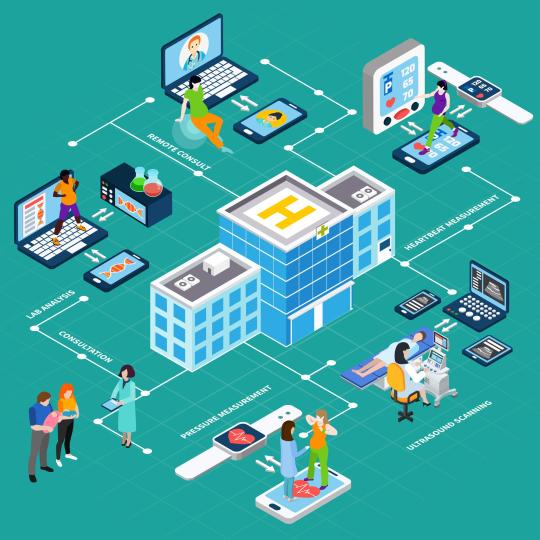
The integration of blockchain technology into the healthcare sector is revolutionizing the way medical data is managed, shared, and secured. As the demand for transparent, efficient, and secure healthcare services grows, blockchain offers promising solutions to longstanding challenges.
Understanding Blockchain in Healthcare
Blockchain Technology is a decentralized digital ledger that records transactions across multiple computers in a way that ensures the security and transparency of data. In healthcare, blockchain can be used to manage patient records, track pharmaceuticals, ensure the integrity of clinical trials, and streamline administrative processes. The immutable nature of blockchain helps in preventing data breaches, ensuring data accuracy, and enhancing patient privacy.
According to BIS Research, the Global Blockchain in Healthcare Market was estimated to grow to a value of $5.61 billion by 2025, and still the market is showing a steep growth till 2030 witnessing a double-digit CAGR growth rate throughout the forecast period.
Key Market Dynamics
Several factors are driving the growth of the global blockchain in healthcare market:
Data Security and Privacy:
Need for robust data security and privacy solutions.
Healthcare data breaches are a growing concern.
Blockchain's secure, immutable nature protects sensitive patient information.
Interoperability and Data Sharing:
Facilitates seamless data sharing between healthcare providers and systems.
Overcomes current interoperability issues.
Leads to better patient outcomes by providing a comprehensive view of health history.
Supply Chain Transparency:
Tracks the entire lifecycle of drugs in the pharmaceutical industry.
Ensures the authenticity of medications.
Helps combat counterfeit drugs.
Efficient Administrative Processes:
Streamlines various administrative processes, such as billing and claims management.
Reduces fraud and administrative costs.
Support from Regulatory Bodies:
Increasing support from regulatory bodies and governments.
Initiatives by FDA and EMA to explore blockchain for drug traceability and clinical trials boost market growth.
Request for an updated Research Report on Global Blockchain in Healthcare Market Research.
Global Blockchain in Healthcare Industry Segmentation
Segmentation by Application:
Data Exchange and Interoperability
Supply Chain Management
Claims Adjudication and Billing Management
Clinical Trials and Research
Others
Segmentation by End-User:
Healthcare Providers
Pharmaceutical Companies
Payers
Others
Segmentation by Region:
North America
Europe
Asia-Pacific
Latin America and Middle East & Africa
Future Market Prospects
The future of the global blockchain in healthcare market looks promising, with several trends likely to shape its trajectory:
Integration with AI and IoT: The integration of blockchain with artificial intelligence (AI) and the Internet of Things (IoT) will enhance data analytics, predictive healthcare, and real-time monitoring.
Expansion of Use Cases: New use cases for blockchain in digital healthcare will emerge, including patient-centered care models, personalized medicine, and enhanced telemedicine services.
Focus on Patient-Centric Solutions: Blockchain will enable more patient-centric healthcare solutions, empowering patients with greater control over their health data and enhancing patient engagement.
Development of Regulatory Frameworks: The establishment of clear regulatory frameworks and industry standards will facilitate the widespread adoption of blockchain in healthcare.
Conclusion
The Global Blockchain in Healthcare Industry is poised for significant growth, driven by the need for enhanced data security, interoperability, supply chain transparency, and efficient administrative processes. By addressing challenges related to regulatory compliance, implementation costs, standardization, and scalability, and leveraging opportunities in technological advancements, investments, partnerships, and government initiatives, the potential of blockchain in healthcare can be fully realized. This technology promises to revolutionize healthcare delivery, enhancing efficiency, transparency, and patient outcomes, and setting new standards for the future of digital health.
#Blockchain in Healthcare Market#Blockchain in Healthcare Industry#Blockchain in Healthcare Market Report#Blockchain in Healthcare Market Research#Blockchain in Healthcare Market Forecast#Blockchain in Healthcare Market Analysis#Blockchain in Healthcare Market Growth#BIS Research#Healthcare
2 notes
·
View notes
Text
Tech-Driven Solutions: A Comprehensive Overview of the Digital Diabetes Management Market

In recent years, the healthcare industry has witnessed a transformative shift with the integration of technology into various aspects of patient care. One notable area that has seen significant advancement is the management of diabetes through digital solutions. The Digital Diabetes Management Market is at the forefront of this revolution, offering a wide array of tech-driven tools and services that aim to empower patients, improve outcomes, and streamline healthcare processes. Mobile Applications and Glucose Monitoring Mobile applications have become instrumental in the lives of individuals living with diabetes. These apps offer features such as glucose monitoring, medication tracking, and meal planning, allowing users to gain valuable insights into their condition. With the advent of continuous glucose monitoring (CGM) technology, patients can now access real-time data on their blood sugar levels, enabling better control and management of their diabetes. Wearable Devices and Remote Patient Monitoring Wearable devices have emerged as a game-changer in diabetes management. From smartwatches to glucose monitors, these devices offer continuous tracking of vital health parameters, including heart rate, blood sugar levels, and physical activity. Physicians can remotely monitor their patients' health data, providing timely interventions and personalized care plans. Telemedicine and Virtual Care Digital diabetes management has transcended traditional clinic visits. Telemedicine and virtual care platforms enable patients to connect with healthcare providers through video consultations, eliminating the need for physical visits. This not only saves time and resources but also ensures better accessibility to specialized care, especially for those in remote areas. The global digital diabetes management market was valued at US$ 7.60 Bn in 2022 and is forecast to reach a value of US$ 38.55 Bn by 2030 at a CAGR of 22.5% between 2023 and 2030. Artificial Intelligence and Predictive Analytics Artificial Intelligence (AI) algorithms and predictive analytics play a crucial role in digital diabetes management. By analyzing vast amounts of patient data, AI can identify patterns and trends that may be missed by human analysis. This allows for more accurate risk assessment and early detection of potential complications, leading to timely interventions and improved outcomes. Personalized Treatment Plans Digital diabetes management platforms are designed to offer personalized treatment plans tailored to each patient's unique needs. By integrating data from various sources, such as glucose levels, medication adherence, and lifestyle choices, these platforms can recommend customized interventions and lifestyle adjustments to achieve better diabetes control. The global traditional wound management market is estimated to be valued at US$ 2,080.8 million in 2023 and is expected to exhibit a CAGR of 3.4% during the forecast period (2023-2030). The Digital Diabetes Management Market represents a paradigm shift in diabetes care, leveraging the power of technology to enhance patient experiences and outcomes. From mobile applications and wearable devices to telemedicine and AI-driven analytics, these tech-driven solutions empower patients to take charge of their health and collaborate more effectively with healthcare providers. As the landscape of digital healthcare continues to evolve, we can expect even more innovative solutions to emerge, further revolutionizing diabetes management and transforming the lives of millions affected by this chronic condition. With ongoing research and technological advancements, the future holds great promise for improving the quality of care and ushering in a new era of patient-centric diabetes management.
#Coherent Market Insights#Healthcare Industry#Medical Devices#Digital Diabetes Management Market#Diabetes Tech#Digital Healthcare#Diabetes Care
3 notes
·
View notes
Text
How Agricultural Technology is Transforming Farming and Shaping Our Future

The future of agricultural technology promises to bring more efficient, effective, and even environmentally friendly farming techniques. Technology innovations are quickly advancing traditional methods of farming with robotic control systems, artificial intelligence (AI), efficient irrigation systems, and more. With these advances, farmers can expect to produce higher yields with fewer resources, plus have greater access to data-driven predictions and analytics to fine-tune their operations. The potential for agricultural technology is limitless and farmers are increasingly turning to the latest technologies to maximize their yields and guarantee a more sustainable future.
As the global population nears 8 billion people, agricultural technology is developing rapidly to meet the increasing demand for food. From gene-editing techniques, machine learning, and precision agriculture to advancements in irrigation, robotic devices and smart farming, the use of technology in agriculture is paving the way for a more sustainable future. In this blog post, we explore some of the exciting agricultural technology innovations that are propelling agricultural production higher, and how they could lead to a more efficient and sustainable future.
Gene-Editing and Its Disruptive Potential
Gene-editing is revolutionizing the way scientists and farmers design crops, augmenting natural adaptation to improve and optimize plants. Scientists are able to selectively alter the genetic code of those plants in order to boost desired traits, such as disease resistance or greater yield. CRISPR, or clustered regularly interspaced short palindromic repeats, is an efficient and precise gene-editing tool that is often utilized in laboratories, but can also be deployed in the field. As CRISPR technology continues to evolve, it is likely to have a larger impact on agricultural production.
The Benefits of Smart Irrigation
Advancements in irrigation are allowing farmers to intelligently monitor and manage their water usage. Smart irrigation systems can leverage climate data, soil sensors and precipitation forecasts to determine the optimal time and amount of water needed to nourish the crops. Automatically adjusting this depending on the changing conditions, such as temperatures and rainfall variations, is proving to be a much more effective way than traditional irrigation methods. With this added level of control, not only do farmers save water, but they also increase their crop yields and reduce input costs.
Precision Agriculture and Machine Learning
In the quest to improve agricultural production, precision agriculture is seen by many as the ultimate solution. This process involves collecting data about soil, crops, and weather and using analytical tools such as machine learning to help farmers make informed decisions. Utilizing this information can give farmers a better understanding of how crops are responding to different conditions, enabling them to quickly make better decisions on how to increase crop yield. In addition, machine learning algorithms can be used to identify yield-limiting factors such as pests or diseases, and instantly signal growers to take appropriate action.
Robots in Agriculture
The use of robots in agriculture is one of the latest innovations to hit the market. Robots can be used for tasks like crop scouting, weed management, and harvesting. They are also capable of gathering data quickly and accurately, enabling more efficient decisions to be made. While robots have a way to go before they reach full autonomy, they have already proven to be very valuable in a wide range of agricultural applications, and are likely to play an increasingly important role in the near future.
Conclusion
Agricultural technology has the potential to transform the future of farming. From gene-editing and the use of smart irrigation systems to precision agriculture and the use of robots in agriculture, the agriculture industry is on the cusp of some major breakthroughs that could drastically improve yields and reduce input costs. As technology continues to advance, it is likely that these innovations will become commonplace and result in a more sustainable and efficient future.
Agricultural technology is an ever-changing field with continual advances. With the increase in smart technology, robots and drones, farms are becoming more efficient and sustainable. The use of technology helps maximize yield, conserve resources and increase worker safety. By leveraging advanced technology, farmers now have access to a host of new strategies and processes. The future of agriculture promises to be even brighter as we enter a period of technological advancement and innovation.
Thank you for engaging in this exploration of agricultural technologies. We must continue to use it responsibly to create positive outcomes and make farming easier and more profitable in the years to come. Learn more about agricultural technology with Taim.io
2 notes
·
View notes
Text
Low-code Development Platforms: Build an app through Graphical User Interfaces

Amidst the growing demand for digital transformation across the businesses in all domains, building an application following the traditional mobile application development process becomes a bewildering challenge. Businesses want to integrate more digital transformation into the operational processes, and this calls upon the need to speed up application development by using advanced tools and technologies.
This calls upon the need to adopt low-code-development platforms for quick business transition and seamless growth. According to PS Intelligence in 2018, the global low-code development platform market was valued at 5.6 billion USD and is expected to reach 52.3 billion USD by 2024, progressing at a CAGR of 45.2% during the forecast period.
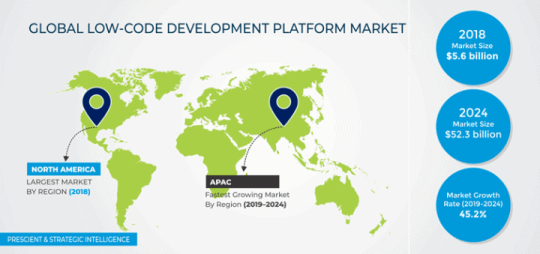
With these platforms, the web and mobile developers do not write long codes; instead, the entire application development process includes visual elements along with drag and drop actions.
What is low-code development?
Low-code development is an application development approach that accelerates the development process by infusing visual elements and eliminate the need for manual coding for faster delivery.
Features of Low-code development platforms
A low code development platform incorporates extensive features that make it a must-have platform for business organizations to stay ahead of the competition. These features include:
Visual scripting: You can create an application module or whole application in a drag and drop like interface where you don’t have to write a single line of code. As programming code is more visual, it needs less thinking to be understood.
Visual modeling: Allows converting business ideas into workflows with UI elements such as data models, notifications, events and more.
Data remodeling: Seamlessly converts data models into APIs and relational tables.
Mobility: Integrated with mobility mechanism that makes the application more responsive over mobile devices.
Security: Access management features give you full control over the application. You can manage who can view your application and when.
App life-cycle management: Low code development principles simplify deployment and maintenance while making the app more scalable.
Rules engine: Simplifies the process to define business logic through an in-built rule engine. Rule engine provides a development environment for coders to create applications through GUI and not actual programming code.
Hosting: Any rich user interface requirement can be settled by hosting custom code through the low development app platform.
Integration: Easy integration with third-party applications and systems via APIs and connectors.
Components of low-code development platform
Low code platform, also known as Rapid Application Development, allows both professional developers and non-developers like business managers or any IT professional who doesn’t know how to code but understands business logic to build and deploy web and mobile applications in few days or weeks. Few components of Low-code development platform include:
Continuous integration: The automated system picks up the latest version from the build, repository, test and validates the master file for deployment.
Reusability: Allows developers to switch from one project to another with ease, identify and resolve the problems efficiently while increasing the quality of the application portfolio.
Omnichannel app development: One code base for different devices enable developers to target problems right from one single platform.
Openness and extensibility: Using Cloud-based architecture, the developers can deploy applications quite easily and efficiently.
Performance: The integration of automated testing and quality monitoring makes these apps perform faster.
Connectivity: Empower users with extensive connectivity over IoT devices, Blockchain, Artificial Intelligence, and Machine Learning without the need to have expert knowledge.
Deployment: Public cloud integration offers scalability and reliability with a reduced need for maintaining the infrastructure.
youtube
What can you build with low code?
Internal applications: Low code allows creating beautiful, and advanced applications for the Business internal processes.
Customer-facing applications: Enables creating digital customer-focused and field focused applications with an immersive UI while incorporating easy accessibility and extensive usability.
Legacy modernization apps: Transform your CRM, ERP and other core business systems through low code development capabilities without impacting the regular business activities.
Operational efficiency apps: Low code application development helps to build apps that boost your business productivity to a remarkable extent.
Benefits of a low-code development platform
Low code application development is easy to use, integrate and deploy in the business infrastructure. Not only it is easy to build an app with the no-coding approach, but these apps are highly efficient and work on cross-platform devices. Some of the scalable features include:
Improved agility: Accelerate digital innovation and business transformation by building a responsive application using a quick to build approach.
Higher productivity: Lesser coding with automated testing, database handling, scaling, one-click deployment capabilities results in yielding higher productivity and better results.
Decreased cost: Low code application development doesn’t demand to deploy hardware components as its cloud-based and thus proves to be a cost-efficient app development approach.
Effective risk management and governance: Since everything is available on the cloud and can be managed from one interface, risk management becomes easier.
Faster transformation: With a low code development approach, the developers can build more apps in lesser time. Easy deployment and management results in faster business transformation.
Change easily: With drag and drop elements and simple visual components, it’s extremely easier to change the application at any point in time.
How low-code platforms are transforming software development?
Low code platforms integrate powerful features such as citizen development that enables users with even no technical knowledge to code the program. These single interface platforms are cloud-based and offer ease of usability that adds to transform software development.
5 best low-code development platforms in 2020
1) DWKit
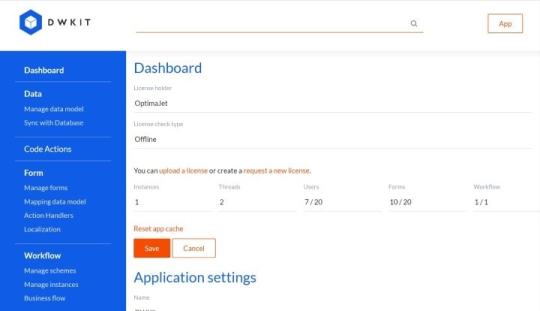
DWkit is an efficient low code development program packed with effective features. It is a form builder, security, workflow, and data mapping application.
Link: Web
2) Appian
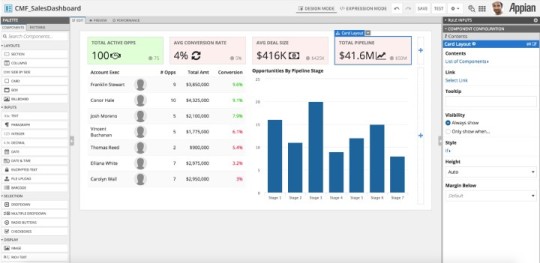
The platform offers native AI services with zero-code integration to ML/AI platforms through Amazon AWS, Microsoft Azure and Google Cloud.
Link: Web
3) Visual LANSA

Visual LANSA is an effective and powerful platform for developing web, mobile, and desktop applications. It features extensive application testing, deployment, and integration tools.
Link: Web
4) KissFlow
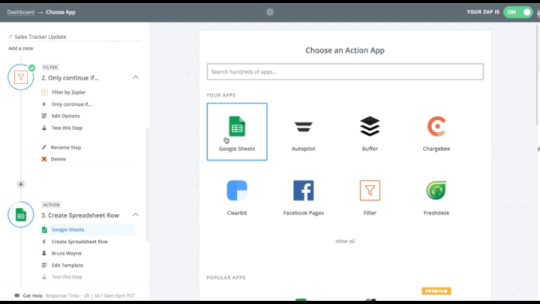
Eliminates the need to code your application completely with KissFlow. Drag and drop tools to build tasks and fields as well as to add and edit various fields.
Link: Web
5) Mendix
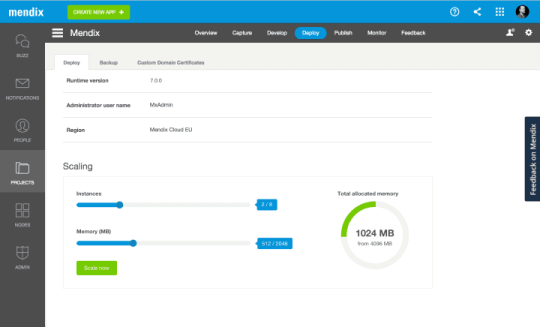
Integrates highly advanced visual modeling tools and reusable components. Agile project management capabilities make it more powerful.
Link: Web
How TechAhead can help you in low-code development?
If you are looking for a low code development platform for your business and don’t know where to get started, TechAhead is here to help you build enterprise-grade apps quickly and efficiently for complete business transformation.
Final words
Low code platforms allow developers to create mobile and web apps without coding using drag and drop options. These platforms are an efficient way for mobile app development companies to get more done in case of apps with limited functionality.
Frequently Asked Questions (FAQs)
What is the low-code development platform? Low code development is an application development platform that eliminates the need for heavy coding while building an app. It includes visual elements and drag and drop tools that enable building creative, powerful and responsive apps for businesses.
Does low code mean no-code? Low code development platforms include coding, but not as much as that of traditional application development approaches.
How do low code platforms facilitate digital transformation? Applications build using low code platforms help businesses cope up with the rising market demands and help them stay ahead of the competition.
How to identify a low code platform for enterprise-grade apps? A good low code development platform is one that includes capabilities such as:
Cognitive intelligence
Change management
Simple prototype development
Citizen development
Easy requirement gathering
Integration readiness
1 note
·
View note
Text
Endosulphane Market: Size, Share, and Future Growth 2028
"The Endosulphane Market sector is undergoing rapid transformation, with significant growth and innovations expected by 2028. In-depth market research offers a thorough analysis of market size, share, and emerging trends, providing essential insights into its expansion potential. The report explores market segmentation and definitions, emphasizing key components and growth drivers. Through the use of SWOT and PESTEL analyses, it evaluates the sector’s strengths, weaknesses, opportunities, and threats, while considering political, economic, social, technological, environmental, and legal influences. Expert evaluations of competitor strategies and recent developments shed light on geographical trends and forecast the market’s future direction, creating a solid framework for strategic planning and investment decisions.
Get a Sample PDF of Report - https://www.databridgemarketresearch.com/request-a-sample/?dbmr=global-endosulphane-market
Which are the top companies operating in the Endosulphane Market?
The report profiles noticeable organizations working in the water purifier showcase and the triumphant methodologies received by them. It likewise reveals insights about the share held by each organization and their contribution to the market's extension. This Global Endosulphane Market report provides the information of the Top Companies in Endosulphane Market in the market their business strategy, financial situation etc.
Coromandel International, Excel Cro Care Ltd, HIL and Indichem
Report Scope and Market Segmentation
Which are the driving factors of the Endosulphane Market?
The driving factors of the Endosulphane Market are multifaceted and crucial for its growth and development. Technological advancements play a significant role by enhancing product efficiency, reducing costs, and introducing innovative features that cater to evolving consumer demands. Rising consumer interest and demand for keyword-related products and services further fuel market expansion. Favorable economic conditions, including increased disposable incomes, enable higher consumer spending, which benefits the market. Supportive regulatory environments, with policies that provide incentives and subsidies, also encourage growth, while globalization opens new opportunities by expanding market reach and international trade.
Endosulphane Market - Competitive and Segmentation Analysis:
**Segments**
- **Type**: On the basis of type, the global Endosulphane market can be segmented into Endosulfan I and Endosulfan II. - **Application**: Based on application, the market is categorized into agriculture, horticulture, pest control, and others. - **End-User**: The end-user segmentation includes farmers, greenhouse owners, pest control companies, and others. - **Region**: Geographically, the global Endosulphane market is segmented into North America, Europe, Asia-Pacific, Latin America, and Middle East & Africa.
With the increasing focus on sustainable agricultural practices and the rising demand for high-quality crops, the global Endosulphane market is expected to witness substantial growth by 2028. The market growth can be attributed to the effectiveness of Endosulphane in controlling a wide range of pests, thereby enhancing crop yield and quality. Furthermore, the adoption of advanced technologies in agriculture and the increasing awareness about the benefits of using Endosulphane are likely to drive the market growth during the forecast period.
**Market Players**
- Syngenta AG - Bayer CropScience AG - Dow AgroSciences LLC - Nufarm Limited - Sumitomo Chemical Co., Ltd. - Adama Agricultural Solutions Ltd. - UPL Limited - BASF SE - Sinochem Group - Arysta Lifescience Corporation
These key market players are actively involved in product development, partnerships, mergers, and acquisitions to strengthen their market presence and expand their product portfolios. By focusing on strategic collaborations and innovations, these companies are aiming to cater to the growing demand for Endosulphane across the global agricultural sector, thereby driving market growth and enhancing their competitive position.
The global Endosulphane market is poised for significant growth in the coming years due to several key factors influencing the industry landscape. One of the primary drivers of market expansion is the increasing emphasis on sustainable agricultural practices worldwide. As concerns over environmental impact grow, there is a rising demand for solutions that balance effective pest control with minimal harm to ecosystems. Endosulphane stands out as a versatile and potent insecticide that can effectively manage a broad spectrum of pests, contributing to enhanced crop yield and quality.
Moreover, the evolving landscape of agriculture, marked by the rapid adoption of advanced technologies and precision farming techniques, is propelling the demand for agrochemicals like Endosulphane. Integrating innovative solutions into agricultural practices not only boosts efficiency but also promotes sustainable production methods. Farmers, greenhouse owners, and pest control companies are increasingly recognizing the benefits of incorporating Endosulphane into their pest management strategies, driving further market growth.
In addition to technological advancements, the growing awareness about the benefits of Endosulphane is influencing market dynamics. As consumers prioritize high-quality produce and sustainable farming practices, there is a shift towards eco-friendly pest control solutions that ensure food safety and environmental preservation. This trend is expected to underpin the steady expansion of the Endosulphane market, particularly in regions with a strong agricultural presence.
Looking at the competitive landscape, key market players such as Syngenta AG, Bayer CropScience AG, and Dow AgroSciences LLC are actively engaging in strategic initiatives to strengthen their market positions. Through product development, strategic partnerships, and mergers and acquisitions, these companies are enhancing their product portfolios and expanding their global reach. By leveraging their expertise and resources, market players are well-positioned to capitalize on the growing demand for Endosulphane and address the evolving needs of the agricultural sector.
Furthermore, regulatory developments and evolving market dynamics are shaping the future trajectory of the global Endosulphane market. As governments implement stringent regulations regarding**Market Players** - Syngenta AG - Bayer CropScience AG - Dow AgroSciences LLC - Nufarm Limited - Sumitomo Chemical Co., Ltd. - Adama Agricultural Solutions Ltd. - UPL Limited - BASF SE - Sinochem Group - Arysta Lifescience Corporation - Coromandel International - Excel Cro Care Ltd - HIL - Indichem
The global Endosulphane market is poised to experience significant growth driven by several key factors influencing the industry landscape. The increasing focus on sustainable agricultural practices globally, driven by concerns over environmental impacts and the demand for eco-friendly pest control solutions, is a primary driver of market expansion. Endosulphane, with its effectiveness in managing a broad spectrum of pests while minimizing harm to ecosystems, is well-positioned to meet the growing need for sustainable pest management solutions.
Moreover, the adoption of advanced agricultural technologies and precision farming techniques is contributing to the escalating demand for agrochemicals such as Endosulphane. Integration of innovative solutions in farming practices not only enhances efficiency but also promotes sustainable production methods, resonating with the evolving preferences of farmers, greenhouse owners, and pest control companies worldwide. This shift towards sustainable farming practices is expected to further fuel the growth of the Endosulphane market, particularly in regions with a strong agricultural presence.
Key market players like Syngenta AG, Bayer CropScience AG, and Dow
North America, particularly the United States, will continue to exert significant influence that cannot be overlooked. Any shifts in the United States could impact the development trajectory of the Endosulphane Market. The North American market is poised for substantial growth over the forecast period. The region benefits from widespread adoption of advanced technologies and the presence of major industry players, creating abundant growth opportunities.
Similarly, Europe plays a crucial role in the global Endosulphane Market, expected to exhibit impressive growth in CAGR from 2024 to 2028.
Explore Further Details about This Research Endosulphane Market Report https://www.databridgemarketresearch.com/reports/global-endosulphane-market
Key Benefits for Industry Participants and Stakeholders: –
Industry drivers, trends, restraints, and opportunities are covered in the study.
Neutral perspective on the Endosulphane Market scenario
Recent industry growth and new developments
Competitive landscape and strategies of key companies
The Historical, current, and estimated Endosulphane Market size in terms of value and size
In-depth, comprehensive analysis and forecasting of the Endosulphane Market
Geographically, the detailed analysis of consumption, revenue, market share and growth rate, historical data and forecast (2024-2028) of the following regions are covered in Chapters
The countries covered in the Endosulphane Market report are U.S., Canada, Mexico, Brazil, Argentina, Rest of South America, Germany, Italy, U.K., France, Spain, Netherlands, Belgium, Switzerland, Turkey, Russia, Rest of Europe, Japan, China, India, South Korea, Australia, Singapore, Malaysia, Thailand, Indonesia, Philippines, Rest of Asia-Pacific, Saudi Arabia, U.A.E, South Africa, Egypt, Israel, and Rest of the Middle East and Africa
Detailed TOC of Endosulphane Market Insights and Forecast to 2028
Part 01: Executive Summary
Part 02: Scope Of The Report
Part 03: Research Methodology
Part 04: Endosulphane Market Landscape
Part 05: Pipeline Analysis
Part 06: Endosulphane Market Sizing
Part 07: Five Forces Analysis
Part 08: Endosulphane Market Segmentation
Part 09: Customer Landscape
Part 10: Regional Landscape
Part 11: Decision Framework
Part 12: Drivers And Challenges
Part 13: Endosulphane Market Trends
Part 14: Vendor Landscape
Part 15: Vendor Analysis
Part 16: Appendix
Browse More Reports:
Chorea Treatment Market – Industry Trends and Forecast Thermal Transfer Overprinter Market – Industry Trends and Forecast Europe Thermal Transfer Overprinter Market – Industry Trends and Forecast Middle East and Africa Thermal Transfer Overprinter Market – Industry Trends and Forecast Asia-Pacific Thermal Transfer Overprinter Market – Industry Trends and Forecast North America Thermal Transfer Overprinter Market – Industry Trends and Forecast Europe Machine Condition Monitoring Market – Industry Trends and Forecast U.S. Machine Condition Monitoring Market – Industry Trends and Forecast Bacteriophages Therapy Market – Industry Trends and Forecast Cardiopulmonary Bypass Accessory Equipment Market – Industry Trends and Forecast Poultry Feed Mycotoxin Binders and Modifiers Market – Industry Trends and Forecast Specialty Meat Ingredients Market – Industry Trends and Forecast Poultry Feed Processing Market – Industry Trends and Forecast Gas Pooling Mechanism Market – Industry Trends and Forecast Blu-Ray Players Market – Industry Trends and Forecast
Data Bridge Market Research:
Today's trends are a great way to predict future events!
Data Bridge Market Research is a market research and consulting company that stands out for its innovative and distinctive approach, as well as its unmatched resilience and integrated methods. We are dedicated to identifying the best market opportunities, and providing insightful information that will help your business thrive in the marketplace. Data Bridge offers tailored solutions to complex business challenges. This facilitates a smooth decision-making process. Data Bridge was founded in Pune in 2015. It is the product of deep wisdom and experience.
Contact Us:
Data Bridge Market Research
US: +1 614 591 3140
UK: +44 845 154 9652
APAC: +653 1251 1207
Email:- [email protected] "
0 notes
Text
Emerging Trends in the Airport Automation Market: A Deep Dive

The global aviation industry is experiencing rapid advancements in technology, and airport automation has emerged as a key driver of efficiency and customer satisfaction. The Airport Automation Market is projected to grow from USD 5.8 billion in 2023 to USD 7.7 billion by 2028, with a Compound Annual Growth Rate (CAGR) of 5.8% during the forecast period. This growth is fueled by the rising number of air travelers, increasing demand for operational efficiency, and the integration of data-driven decision-making technologies.
As airports worldwide strive to optimize their operations, automation is playing a critical role in reducing congestion, improving passenger experience, and enhancing security. The adoption of self-service kiosks, automated baggage handling, biometric verification, and AI-driven systems is revolutionizing airport processes. The Asia Pacific region, particularly China, is at the forefront of this transformation, accounting for a significant share of the Airport Automation Market.
This article explores the key trends, opportunities, challenges, and technological advancements shaping the future of the Airport Automation Market.
Market Growth Drivers
Increasing Passenger Traffic and Demand for Efficiency
The rise in global air travel has led to an overwhelming demand for faster and more efficient airport operations. With millions of passengers passing through airports daily, automation solutions such as self-service check-in kiosks, automated security screening, and biometric boarding gates are streamlining the travel experience. These technologies reduce wait times, minimize human intervention, and ensure smooth passenger flow.
Adoption of Self-Service Technologies
Airports are increasingly deploying self-service solutions to enhance efficiency. Self-check-in kiosks, automated baggage drop systems, and AI-powered boarding processes allow passengers to navigate airports with minimal assistance. These innovations not only enhance the traveler experience but also help airports manage capacity effectively.
Growing Emphasis on Customer-Centric Automation
Passenger satisfaction has become a key focus for airports and airlines. Automated systems provide travelers with greater control over their journey, from mobile app-based notifications to seamless security checks. By prioritizing customer experience, airports can attract more airlines and passengers, reinforcing the demand for automation solutions.
Rise in Brownfield and Greenfield Airport Projects
The expansion of existing airports (brownfield projects) and the construction of new airports (greenfield projects) are fueling the adoption of automation technologies. Greenfield airports, in particular, are integrating automation from the design phase, ensuring a seamless operational framework.
Download Pdf Brochure: https://www.marketsandmarkets.com/pdfdownloadNew.asp?id=133408420
Market Restraints
Cybersecurity Challenges in Airport Automation
The increasing reliance on digital systems in airports has made cybersecurity a critical concern. Automated processes such as biometric verification, AI-driven monitoring, and digital ticketing systems require robust cybersecurity protocols to prevent data breaches and cyberattacks. Investing in advanced security solutions and implementing stringent data protection measures are crucial for building trust among passengers and stakeholders.
High Capital Expenditure for Automation Implementation
One of the primary challenges in the Airport Automation Market is the high cost of implementing advanced technologies. The adoption of AI-driven solutions, robotics, and biometric authentication systems requires substantial financial investment. This cost factor slows down the pace of automation adoption, especially for smaller airports with limited budgets.
Opportunities in the Airport Automation Market
Integration of Data-Backed Decision-Making
The increasing use of artificial intelligence and big data analytics in airport operations presents significant growth opportunities. By analyzing real-time data from passenger movements, aircraft schedules, and weather patterns, airports can optimize resource allocation, enhance security procedures, and improve operational efficiency. The ability to leverage data-driven insights allows airports to predict travel trends and deliver a seamless passenger experience.
New Product Launches and Contracts
Leading airport automation companies are continuously innovating to develop advanced automation solutions. The launch of cutting-edge products and strategic partnerships between technology providers and airport operators are creating lucrative growth opportunities in the market.
Key Segments in the Airport Automation Market
Automation and Control Systems Leading the Market
The Airport Automation Market is categorized into several system segments, including data acquisition and communication, automation and control, data storage, and system and software. The automation and control segment is expected to dominate market share due to the integration of AI and robotics, which enhance operational decision-making and improve overall efficiency.
Air Traffic Management Gaining Prominence
Air traffic management is a crucial segment within the Airport Automation Market. Automated systems provide real-time data to air traffic controllers, reducing the risk of human error and improving flight coordination. Automated conflict resolution systems and AI-powered monitoring tools are enhancing the safety and efficiency of air traffic management.
Greenfield Projects Driving Market Growth
New airport construction projects, particularly in emerging economies, are leveraging automation to build state-of-the-art facilities. Greenfield airports are integrating automation into their infrastructure from the outset, enabling seamless baggage handling, security procedures, and passenger processing.
Regional Insights: Asia Pacific Leading the Market
The Asia Pacific region is the largest adopter of airport automation, driven by the presence of major automation solution manufacturers and integrators. China, in particular, has emerged as a key player, investing heavily in automated airport systems. The Asia Pacific Airport Automation Market is expected to reach USD 2.9 billion by 2028, growing at a CAGR of 6.1%.
The region’s rapid urbanization, rising disposable incomes, and increasing air travel demand are contributing to the expansion of smart airport initiatives. Governments and private sector stakeholders are investing in automation to improve passenger handling, security, and overall airport management.
Key Players in the Airport Automation Market
The global Airport Automation Market is dominated by well-established manufacturers and technology providers that offer advanced automation solutions. Some of the prominent players include:
Daifuku Co. Ltd. (Japan) – A leading provider of airport baggage handling systems and automation solutions.
Collins Aerospace (US) – Specializes in integrated airport automation technologies, including AI-driven passenger processing solutions.
Siemens (Germany) – Offers advanced air traffic management and airport control systems.
Amadeus IT Group (Spain) – A major player in airport IT solutions, focusing on self-service and cloud-based automation platforms.
Ask For Sample Report: https://www.marketsandmarkets.com/requestsampleNew.asp?id=133408420
Future Outlook of the Airport Automation Market
The Airport Automation Market is poised for significant growth in the coming years. With the continuous rise in global air travel, the demand for efficient and seamless airport operations will continue to drive automation adoption. Advancements in artificial intelligence, biometrics, and cybersecurity will play a crucial role in shaping the future of smart airports.
Despite challenges related to cybersecurity and high capital expenditures, the market presents numerous opportunities for innovation and investment. Governments, airport authorities, and technology providers must collaborate to create a secure and efficient automated airport ecosystem.
The Airport Automation Market is transforming the aviation industry, making air travel more efficient, secure, and passenger-friendly. As airports worldwide embrace automation, the integration of self-service technologies, AI-powered systems, and data-driven decision-making will redefine the airport experience. With the Asia Pacific region leading the market and new technological advancements emerging, the future of airport automation looks promising.
#airport automation market#airport automation industry#smart airports#aviation technology#air traffic management#self-service kiosks
0 notes
Text
The Future of ERP Software in India: Trends to Watch in 2024
As India continues to solidify its position as a global economic powerhouse, the demand for sophisticated Enterprise Resource Planning (ERP) solutions has never been higher. ERP software companies in India are at the forefront of this transformation, driving innovation and efficiency across various industries. As we look ahead to 2024, several key trends are shaping the future of ERP software in India. This blog delves into these trends, offering insights into how ERP software providers in India are gearing up to meet the evolving needs of businesses.
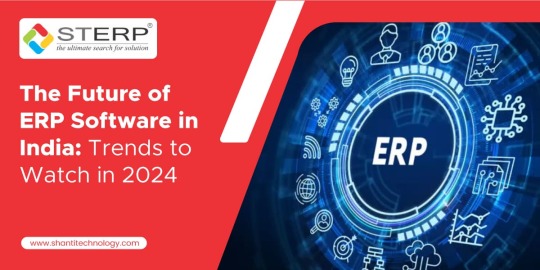
1. Increased Adoption of Cloud-Based ERP Solutions
One of the most significant trends in the ERP landscape is the shift towards cloud-based solutions. ERP software companies in India are increasingly offering cloud-based ERP systems to meet the growing demand for flexibility, scalability, and cost-efficiency. Cloud ERP solutions eliminate the need for extensive on-premises infrastructure, allowing businesses to reduce capital expenditure and streamline operations.
Cloud-based ERP systems also facilitate real-time data access and collaboration, enabling businesses to make informed decisions quickly. This trend is particularly beneficial for small and medium-sized enterprises (SMEs) that require affordable and scalable ERP solutions to compete effectively in the market.
2. Integration of Artificial Intelligence and Machine Learning
Artificial Intelligence (AI) and Machine Learning (ML) are revolutionizing the ERP landscape. ERP software providers in India are integrating AI and ML technologies to enhance the capabilities of their solutions. These technologies enable predictive analytics, automate routine tasks, and provide intelligent insights, helping businesses to optimize their operations.
For instance, AI-powered ERP systems can forecast demand, manage inventory levels, and predict maintenance needs, significantly improving efficiency and reducing costs. As AI and ML technologies continue to evolve, their integration into ERP systems will become more sophisticated, offering even greater value to businesses.
3. Focus on Industry-Specific ERP Solutions
ERP software companies in India are increasingly developing industry-specific ERP solutions to cater to the unique needs of different sectors. Whether it is manufacturing, retail, healthcare, or finance, each industry has distinct requirements that generic ERP systems might not fully address. Industry-specific ERP solutions offer tailored functionalities and workflows, ensuring better alignment with business processes.
For example, a manufacturing ERP system might include features for production planning, quality control, and supply chain management, while a retail ERP system could focus on inventory management, point of sale (POS) integration, and customer relationship management (CRM). This trend towards specialization ensures that businesses can leverage ERP systems that truly support their operational needs.
4. Enhanced Mobile Accessibility
With the proliferation of smartphones and mobile devices, the need for mobile-friendly ERP solutions is growing. ERP software providers in India are developing mobile applications that allow users to access critical business information on the go. Mobile ERP solutions enable employees to perform tasks such as inventory checks, sales order processing, and expense reporting from their smartphones or tablets.
This trend not only improves accessibility but also enhances productivity by enabling employees to work remotely and make decisions in real-time. As mobile technology continues to advance, the functionality and user experience of mobile ERP applications will improve, making them an indispensable tool for modern businesses.
5. Increased Emphasis on Data Security and Compliance
As businesses become more reliant on digital technologies, data security and compliance have become paramount. ERP software providers in India are prioritizing data protection by incorporating advanced security features into their solutions. This includes encryption, multi-factor authentication, and regular security audits to safeguard sensitive business information.
Moreover, with the implementation of regulations such as the General Data Protection Regulation (GDPR) and India’s Personal Data Protection Bill, compliance is a critical concern for businesses. ERP software providers are ensuring that their systems comply with these regulations, helping businesses avoid legal penalties and build trust with their customers.
6. Rise of Hybrid ERP Solutions
While cloud-based ERP systems offer numerous advantages, some businesses prefer on-premises solutions due to specific regulatory or operational requirements. To cater to these diverse needs, ERP software companies in India are offering hybrid ERP solutions that combine the benefits of both cloud and on-premises systems.
Hybrid ERP solutions provide the flexibility of cloud-based systems while allowing businesses to maintain critical applications on-premises. This approach offers a balanced solution, enabling businesses to optimize their IT infrastructure based on their unique needs and preferences.
7. Adoption of Advanced Analytics and Business Intelligence
Data is the new currency in today’s business environment, and the ability to harness and analyze data is a key competitive advantage. ERP software providers in India are integrating advanced analytics and business intelligence (BI) tools into their systems. These tools enable businesses to gain deep insights into their operations, identify trends, and make data-driven decisions.
Advanced analytics and BI tools can analyze large volumes of data from various sources, providing comprehensive reports and dashboards. This helps businesses to monitor performance, identify inefficiencies, and uncover new opportunities for growth.
8. Greater Focus on User Experience and Interface Design
The user experience (UX) and interface design of ERP systems are critical to their adoption and effectiveness. ERP software companies in India are placing a greater emphasis on developing intuitive and user-friendly interfaces. This trend is driven by the need to ensure that ERP systems are accessible and easy to use for all employees, regardless of their technical expertise.
Modern ERP systems feature clean, responsive interfaces with customizable dashboards and navigation options. This focus on UX design helps to improve user satisfaction, reduce training time, and increase overall productivity.
9. Integration with the Internet of Things (IoT)
The Internet of Things (IoT) is transforming the way businesses operate by enabling real-time monitoring and data collection from connected devices. ERP software providers in India are integrating IoT capabilities into their systems to enhance operational efficiency and decision-making.
IoT-enabled ERP systems can monitor equipment performance, track inventory levels, and optimize supply chain operations. For example, sensors placed on manufacturing equipment can detect anomalies and trigger maintenance requests before a breakdown occurs. This integration of IoT with ERP systems allows businesses to leverage real-time data for proactive management and improved efficiency.
10. Sustainable and Green ERP Solutions
Sustainability is becoming a key consideration for businesses across industries. ERP software companies in India are developing solutions that support sustainable practices and environmental responsibility. Green ERP solutions help businesses to monitor and reduce their environmental impact by tracking energy consumption, waste management, and resource utilization.
By integrating sustainability metrics into their ERP systems, businesses can set and achieve environmental goals, comply with regulations, and enhance their corporate social responsibility (CSR) initiatives. This trend towards sustainable ERP solutions reflects the growing importance of environmental stewardship in today’s business landscape.
Conclusion
The future of ERP software in India is marked by innovation, adaptability, and a deep understanding of the unique needs of businesses. ERP software providers in India are leading the charge, offering solutions that are not only technologically advanced but also aligned with the evolving demands of the market. As we move into 2024, the trends highlighted in this blog will play a crucial role in shaping the ERP landscape, driving efficiency, and fostering growth across industries.
ERP software providers in India are well-positioned to support businesses in their digital transformation journeys, providing the tools and insights needed to thrive in a competitive environment. By staying ahead of these trends, businesses can leverage ERP solutions to achieve operational excellence and sustainable growth.
#ERP software Companies in India#ERP software providers in India#ERP software company in India#ERP software in India#ERP solution provider#ERP software#ERP system#cloud ERP#ERP solutions
4 notes
·
View notes
Text

United States Industrial Valve Market size by value at USD 25.02 billion in 2024. During the forecast period between 2025 and 2031, BlueWeave expects United States Industrial Valve Market size to grow at a steady CAGR of 4.90% reaching a value of USD 34.98 billion by 2031. The Industrial Valve Market in United States is experiencing growth due to the increasing demand for advanced valves in smart water distribution systems and HVAC applications in the growing number of smart cities. Additionally, the healthcare and pharmaceutical industries require specialized valves to meet stringent standards for precision and sterility. Technological advancements have led to the development of auto-responsive valves that enhance energy efficiency by optimizing operations based on real-time data. Moreover, the oil and gas sector continues to rely heavily on gate valves for controlling the flow in pipelines, underscoring their importance in maintaining operational reliability.
Sample Request: https://www.blueweaveconsulting.com/report/united-states-industrial-valve-market/report-sample
Opportunity – Integration of IIoT Technology in Industrial Valves
The adoption of Industrial Internet of Things (IIoT) technology is a key growth driver in United States Industrial Valve Market. IIoT-enabled smart valves enhance real-time monitoring, predictive maintenance, and remote control, improving efficiency and reducing operational costs in industries, such as oil & gas, water treatment, and manufacturing. Advanced sensors and AI-driven analytics help detect leaks, pressure fluctuations, and wear, minimizing downtime and ensuring compliance with safety regulations. The rising focus on automation and digital transformation in industrial processes is further accelerating the demand for intelligent valve solutions. Additionally, government initiatives promoting smart manufacturing and Industry 4.0 adoption are fostering investments in IIoT-integrated valves, driving market expansion across various end-user industries.
#BlueWeave#Consulting#Marketforecast#Marketresearch#IndustrialValveMarketSize#USMarketResearch#IndustrialValves#ProcessAutomation#IndustrialAutomation
0 notes
Text
How Business Intelligence is Revolutionizing Hotel Operations

Introduction
The hotel industry is undergoing a major transformation, with data-driven decision-making becoming a key factor in success. Hotels that rely on real-time analytics and business intelligence (BI) software can make smarter financial, operational, and guest service decisions, leading to increased efficiency and profitability.
As guest expectations evolve and competition increases, hotels must leverage BI tools to track key performance metrics, optimize revenue, and improve guest experiences. Instead of relying on intuition, BI software provides accurate, actionable insights that drive informed decision-making across all hotel departments.
Why Hotels Need Business Intelligence
Hotels generate vast amounts of data from bookings, revenue management systems, marketing campaigns, and guest interactions. However, without the right tools, this data remains underutilized. Business intelligence helps hotels consolidate this information into meaningful insights, allowing them to:
Optimize pricing strategies using demand forecasting and competitor analysis
Enhance guest personalization by tracking preferences and booking behavior
Improve operational efficiency by identifying cost-saving opportunities
Increase direct bookings by analyzing marketing performance and channel effectiveness
Hotels that integrate BI software into their operations can make data-driven decisions that enhance profitability, improve guest satisfaction, and streamline management processes.
Key Benefits of Hotel Business Intelligence
1. Smarter Revenue Management Through Data-Driven Pricing
One of the biggest advantages of BI software is dynamic pricing optimization. By analyzing:
Past booking trends and seasonal demand fluctuations
Real-time market data and competitor pricing
Revenue per available room (RevPAR) and average daily rate (ADR)
Hotels can implement intelligent pricing strategies that maximize occupancy and revenue. With automated data analysis, managers no longer have to rely on manual forecasting or guesswork.
2. Personalized Guest Experiences for Better Retention
Guests expect more than just a place to stay—they want a tailored experience. Business intelligence enables hotels to:
Track guest preferences and stay history
Offer targeted promotions and loyalty rewards
Customize room amenities and service recommendations
For example, a returning guest may prefer a sea-view room with a specific pillow type. BI software ensures this preference is automatically noted and fulfilled, increasing guest satisfaction and repeat bookings.
3. Enhanced Operational Efficiency and Cost Reduction
BI software provides real-time monitoring of hotel operations, allowing managers to identify bottlenecks and inefficiencies in different departments. Hotels can:
Optimize housekeeping schedules based on occupancy levels
Reduce front desk wait times by monitoring check-in/check-out trends
Track staff productivity and resource allocation
By analyzing operational data, hotels can reduce costs while maintaining high service standards.
4. Maximizing Direct Bookings and Reducing OTA Dependency
Many hotels struggle with high commission fees from OTAs (Online Travel Agencies). Business intelligence helps hotels:
Identify which marketing campaigns generate the most direct bookings
Optimize Google Ads, email marketing, and social media campaigns
Track which customer segments are most likely to book directly
By shifting focus to direct booking strategies, hotels can increase profit margins while maintaining control over their guest relationships.
5. Optimizing Channel Management and Distribution
A well-structured channel management system ensures hotels are visible on multiple platforms without overbooking or pricing inconsistencies. BI tools help hotels:
Analyze OTA and direct booking performance
Identify the most profitable booking channels
Adjust distribution strategies to maximize occupancy and revenue
For an advanced channel management solution, explore channel manager to optimize room availability and pricing across multiple platforms.
How to Implement Business Intelligence in Your Hotel
Integrating business intelligence software into hotel operations requires a structured approach. Here’s how hotels can make the most of BI tools:
1. Choose the Right Business Intelligence Platform
Not all BI software is created equal. Hotels should look for:
Real-time analytics and customizable dashboards
Integration with property management systems (PMS), revenue management, and marketing platforms
Automated reporting for easy decision-making
A well-chosen BI tool provides insights that lead to actionable strategies.
2. Train Your Staff to Leverage Data Insights
Business intelligence is most effective when employees know how to interpret and act on the data. Hotels should:
Provide training on BI dashboards and reports
Encourage departmental managers to use data-driven decision-making
Use BI reports in regular performance meetings to track progress
BI tools are only as useful as the teams using them, so training is essential.
3. Integrate BI with Existing Hotel Management Systems
Business intelligence software works best when fully integrated with a hotel’s existing technology stack, including:
PMS (Property Management Systems) for tracking bookings and occupancy
Revenue management tools for pricing optimization
Guest feedback platforms for sentiment analysis
With a centralized data approach, hotels can ensure seamless coordination across all departments.
4. Continuously Analyze and Adapt Strategies
BI is not a one-time solution—it’s an ongoing process. Hotels should:
Regularly review KPIs and adjust strategies accordingly
Monitor guest feedback and adapt marketing efforts
Stay updated on industry trends to maintain a competitive edge
Hotels that continuously refine their business intelligence strategies will achieve long-term growth and profitability.
Conclusion
Business intelligence is no longer a luxury—it’s a necessity for hotels that want to increase revenue, improve guest experiences, and optimize operations. By leveraging data-driven insights, predictive analytics, and automated reporting, hotels can make informed decisions that lead to higher profitability and stronger guest loyalty.
For a detailed breakdown of BI strategies for hotels, read Why Business Intelligence Is The Secret To Success For Modern Hotels. If you want to optimize hotel distribution and increase bookings, explore channel manager to streamline online visibility and pricing strategies.
0 notes
Text
Healthcare Enterprise Content Management Market – Industry Trends and Forecast to 2028 CAGR: Growth, Share, Value, Insights, and Trends
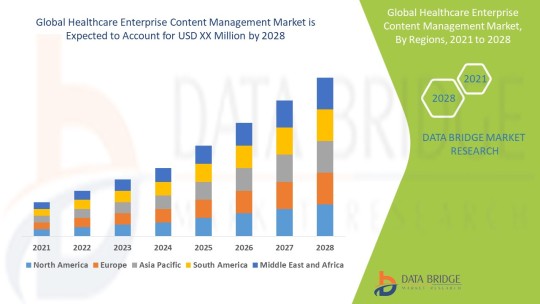
Healthcare Enterprise Content Management Market Size And Forecast by 2028
According to Data Bridge Market Research Data Bridge Market Research analyses that the healthcare enterprise content management market will exhibit a CAGR of around 14.70% for the forecast period of 2021-2028. Rising demand for healthcare data management solutions and rapid digitization of economies will drive the growth of healthcare enterprise content management market.
Our comprehensive Healthcare Enterprise Content Management Market report is ready with the latest trends, growth opportunities, and strategic analysis. https://www.databridgemarketresearch.com/reports/global-healthcare-enterprise-content-management-market
**Segments**
- By Component: Solutions, Services - By Delivery Mode: On-Premises, Cloud-Based - By End-User: Hospitals, Clinics, Pharmacies, Others
The healthcare enterprise content management market is segmented based on various factors that define the different aspects of the industry. One key aspect of this segmentation is based on the component involved in the market, which includes solutions and services. The solutions segment encompasses software applications that aid healthcare organizations in managing their content effectively, while the services segment includes the professional services provided for the implementation and maintenance of these solutions. Another crucial segmentation criterion is the delivery mode, which can be either on-premises or cloud-based. On-premises solutions are hosted within the organization's infrastructure, providing full control and customization options, whereas cloud-based solutions offer scalability and flexibility. Furthermore, the market is segmented based on end-users, with hospitals, clinics, pharmacies, and other healthcare facilities being the primary targets for healthcare enterprise content management solutions.
**Market Players**
- Hyland Software, Inc. - IBM Corporation - OpenText Corporation - Oracle - Xerox Corporation - McKesson Corporation - Lexmark International, Inc. - Perceptive Software - Epic Systems Corporation - Cerner Corporation
Several key players dominate the healthcare enterprise content management market, each offering unique solutions and services to cater to the diverse needs of healthcare organizations. Companies like Hyland Software, Inc., IBM Corporation, and OpenText Corporation are renowned for their innovative software solutions that streamline content management processes within the healthcare sector. Other major players such as Oracle, Xerox Corporation, and McKesson Corporation provide a range of services and products tailored to enhance efficiency and accuracy in healthcare content management. Additionally, companies like Lexmark International, Inc., Perceptive Software, Epic Systems Corporation, and Cerner Corporation have also made significant contributions to the market with their advanced technologies and comprehensive solutions.
https://www.databridgemarketresearch.com/reports/global-healthcare-enterprise-content-management-market The healthcare enterprise content management market is witnessing significant growth and transformation due to the increasing demand for efficient data management solutions within the healthcare sector. One of the key trends shaping the market is the integration of advanced technologies such as artificial intelligence and machine learning into content management systems. These technologies are enabling healthcare organizations to automate processes, improve decision-making, and enhance overall operational efficiency. Furthermore, the rising focus on patient-centric care and personalized medicine is driving the adoption of healthcare enterprise content management solutions that can securely store and analyze vast amounts of patient data.
Another important trend in the healthcare enterprise content management market is the shift towards interoperability and data exchange between different healthcare systems and facilities. With the increasing emphasis on integrated care delivery and seamless information sharing, healthcare organizations are looking for content management solutions that can facilitate the secure exchange of patient data across various platforms and stakeholders. This trend is driving the development of interoperable systems that comply with industry standards and regulations, ensuring the seamless flow of information while maintaining data security and privacy.
Moreover, the growing emphasis on regulatory compliance and data security is influencing the adoption of healthcare enterprise content management solutions that offer robust security features and compliance capabilities. With the increasing prevalence of data breaches and cyber threats in the healthcare industry, organizations are prioritizing solutions that can safeguard sensitive patient information and ensure compliance with data protection regulations such as HIPAA. As a result, healthcare enterprise content management vendors are focusing on enhancing their security protocols and encryption technologies to address the evolving security challenges faced by healthcare organizations.
Furthermore, the increasing digitization of healthcare records and the shift towards electronic health records (EHRs) are driving the demand for advanced content management solutions that can efficiently handle digital content and streamline document management processes. Healthcare organizations are looking for solutions that can digitize, store, retrieve, and analyze electronic health information in a secure and organized manner, thereby improving data accessibility and reducing administrative burdens. This trend is pushing healthcare enterprise content management vendors to develop user-friendly interfaces, advanced search functionalities, and data analytics capabilities to meet the evolving needs of healthcare providers and clinicians.
In conclusion, the healthcare enterprise content management market is experiencing significant growth and evolution driven by technological advancements, regulatory requirements, and changing healthcare dynamics. The market players mentioned earlier are at the forefront of innovation in this space, offering a diverse range of solutions and services to address the complex content management needs of healthcare organizations. As the industry continues to embrace digital transformation and data-driven decision-making, the demand for advanced healthcare enterprise content management solutions is expected to rise, creating opportunities for players to expand their market presence and drive further innovation in the sector.**Segments**
Global Healthcare Enterprise Content Management Market, By Traditional Solution: - Document Management - Document Imaging and Capture - Web Content Management - Records Management - Document Collaboration - Digital Rights Management - Content Analytics - Rich Media Management - Advanced Case Management - Document Output Management - Workflow Management
Emerging Solution: - Social Content Management - Mobile Content Management - Big Data Management - Cloud Content Management
Deployment Type: - Hosted - On Premises
Country: - U.S. - Canada - Mexico - Germany - Italy - U.K. - France - Spain - Netherland - Belgium - Switzerland - Turkey - Russia - Rest of Europe - Japan - China - India - South Korea - Australia - Singapore - Malaysia - Thailand - Indonesia - Philippines - Rest of Asia-Pacific - Brazil - Argentina - Rest of South America - South Africa - Saudi Arabia - UAE - Egypt - Israel - Rest of Middle East & Africa
Industry Trends and Forecast to 2028
**Market Players**
The major players covered in the healthcare enterprise content management market report are: - IBM - Microsoft - Oracle - SAP SE - EMC - Open Text Corporation - Hyland Software, Inc. - Cisco Systems, Inc. - Xerox Corporation - Vanguard Systems, Inc. - Streamline Healthcare Solutions, LLC. - SquareOne Technologies - AM Data Service - ContCentric IT Services Pvt. Ltd. - Agfa-Gevaert Group - Atlassian - DocuWare GmbH - Everteam - Fabasoft
The healthcare enterprise content management market is undergoing significant transformation with the integration of advanced technologies and the increasing emphasis on interoperability and data exchange within the sector. Key trends such as the adoption of artificial intelligence and machine learning for automated processes are reshaping content management systems, enabling healthcare organizations to enhance operational efficiency and decision-making. The shift towards interoperable systems and the focus on regulatory compliance and data security are driving the demand for solutions that facilitate secure data exchange and ensure compliance with industry standards. Additionally, the digitization of healthcare records and the push towards EHRs are fueling the need for advanced content management solutions that can handle digital content effectively and streamline document management processes, thus improving data accessibility and reducing administrative burdens.
The healthcare enterprise content management market is witnessing intense competition among key players such as IBM, Microsoft, Oracle, and SAP SE, who are continuously innovating and expanding their product offerings to meet the evolving needs of healthcare organizations. These players are investing in advanced technologies, security enhancements, and user-friendly interfaces to differentiate their solutions in the market. With the market being segmented based on various criteria such as component, delivery mode, and end-user, companies like EMC, Open Text Corporation, and Hyland Software, Inc. are focusing on providing tailored solutions and services to cater to the specific requirements of hospitals, clinics, pharmacies, and other healthcare facilities. The market forecast indicates continued growth and opportunities for players to strengthen their market presence and drive further innovation in the healthcare enterprise content management sector.
The market is highly fragmented, with a mix of global and regional players competing for market share. To Learn More About the Global Trends Impacting the Future of Top 10 Companies in Healthcare Enterprise Content Management Market : https://www.databridgemarketresearch.com/reports/global-healthcare-enterprise-content-management-market/companies
Key Questions Answered by the Global Healthcare Enterprise Content Management Market Report:
What is the current state of the Healthcare Enterprise Content Management Market, and how has it evolved?
What are the key drivers behind the growth of the Healthcare Enterprise Content Management Market?
What challenges and barriers do businesses in the Healthcare Enterprise Content Management Market face?
How are technological innovations impacting the Healthcare Enterprise Content Management Market?
What emerging trends and opportunities should businesses be aware of in the Healthcare Enterprise Content Management Market?
Browse More Reports:
https://www.databridgemarketresearch.com/reports/global-grape-seed-flour-markethttps://www.databridgemarketresearch.com/reports/global-cloud-native-storage-markethttps://www.databridgemarketresearch.com/reports/global-automotive-hardware-markethttps://www.databridgemarketresearch.com/reports/global-metoprolol-tartrate-markethttps://www.databridgemarketresearch.com/reports/global-manual-car-charger-market
Data Bridge Market Research:
☎ Contact Us:
Data Bridge Market Research
US: +1 614 591 3140
UK: +44 845 154 9652
APAC: +653 1251 982
✉ Email: [email protected]
0 notes